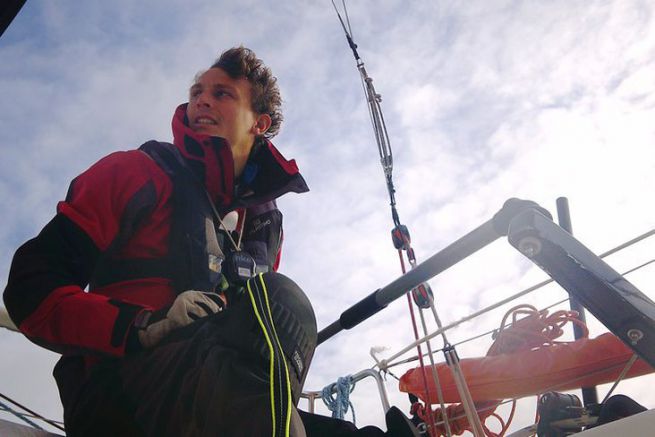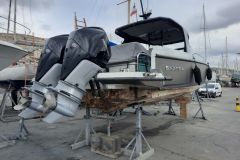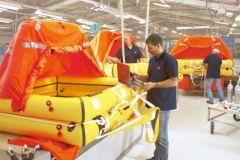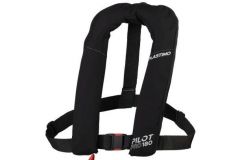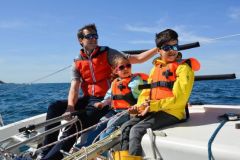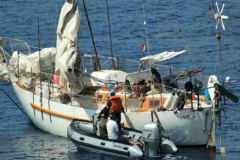The requirements of the Classe Mini for lifejackets are very high: 150 Newtons minimum, subcutal, SOLAS flashlight and anti-embryos hood, harness loop to fix the lanyard. It is of course necessary to be equipped with a replacement gas cartridge in case of activation. Finally, we must always carry a vest more than the number of crew members, meeting the same requirements. Each vest must be marked with the name of the boat.
I have been wearing a Plastimo SL180 lifejacket for one year now, which meets these specifications. Luckily, I never had the opportunity to go overboard to test it in man overboard condition. I will therefore focus on the practical and ergonomic aspect of the vest in the daily life of a sailor.
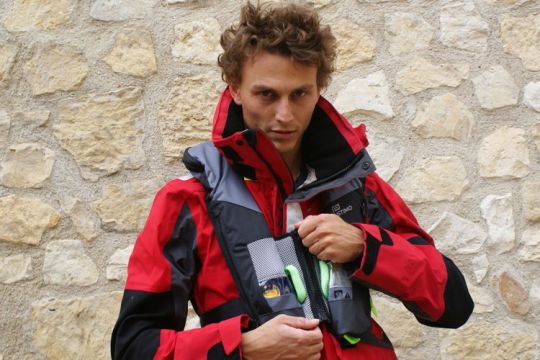
The importance of the ergonomics of the vest
The lifejacket is an essential element of safety at sea. It is imperative to wear it at all times, as falling does not necessarily occur in difficult conditions, it can also happen in good weather. To keep it on you at all times, it is therefore necessary that the vest is comfortable and ergonomic to make you forget as much as possible. In Mini, I don't even leave it to sleep so I can be reactive immediately if something happens during my nap.
Plastimo has been able to provide an appropriate solution on this point. The vest weighs only 1700 grams and closes with a ventral zip. A little sceptical at first about this method of fixing, I quickly changed my mind and can only recommend this system which keeps the vest very close to the body and does not hinder movements.
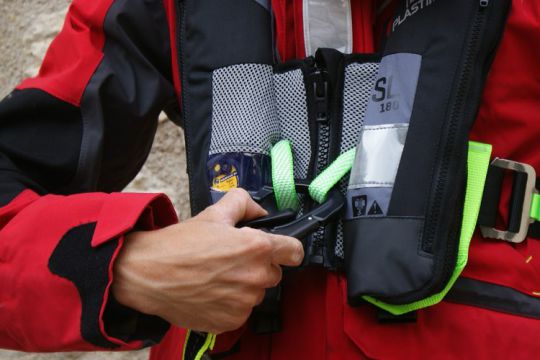
The vest adjusts easily with the fluorescent green straps that allow you to hold the "open" buckle to loosen the strap with a quick hand. The adjustment at the back (the strap at the back) allows the neck to be released so as not to create a pressure point.
A zipped pocket on the front panel is provided to receive a personal beacon. Be careful, however, to attach the beacon to a fixed point so as not to risk losing it if the pocket were to open.
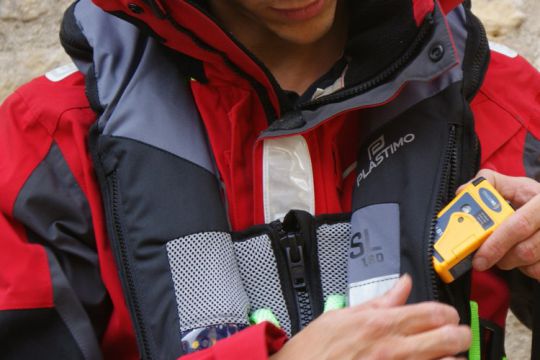
The lanyard to stay attached to the boat
At the beginning of 2019, Plastimo also released its new version of the lanyard. Several strap and carabiner models are available. The lanyards are available in a flat version of 1.50 m or elastic (1 m lengthening to 1.50 m) or combined in a double lanyard (flat and elastic). As for the snap hooks, 3 models are available: stainless steel with double safety, aluminium with twist lock, aluminium with double lever opening with one hand. From these elements, all combinations exist.
I use a single lanyard, double carabiner with Twist Lock moored on the central point of the cockpit and two elastic lanyards that I leave at the station on the lifelines. The loins are attached to two dyneema buckles on the front of the vest.
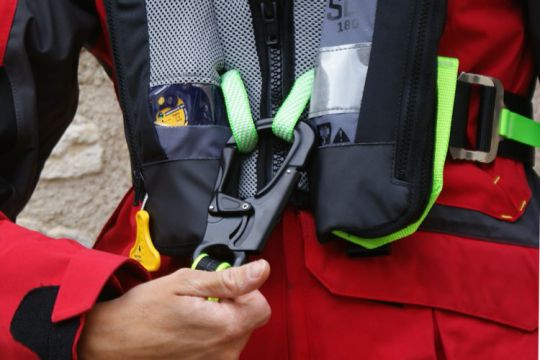
The carabiners are cleverly designed: to avoid hanging on the buckles when you attach or detach them, they do not have a "hook" on the spout - as is often the case with stainless steel carabiners.
A reflective wire runs along the entire length of the lanyard to be easily spotted at night.
These are therefore products well thought out for use in offshore racing and with which I will launch myself in September 2019 on the Mini Transat.
